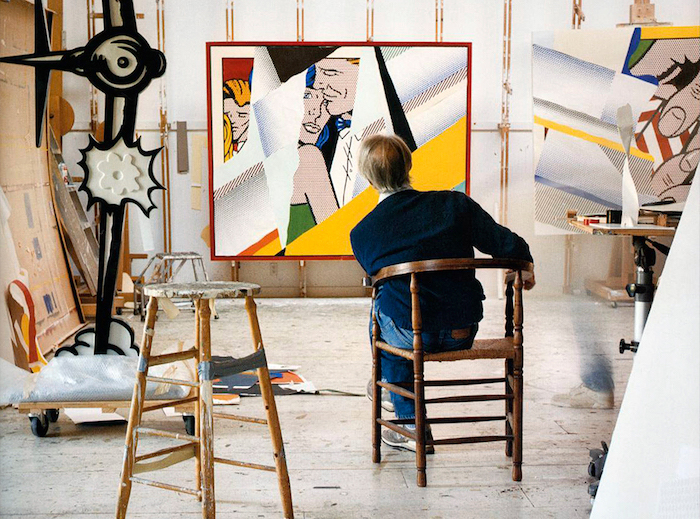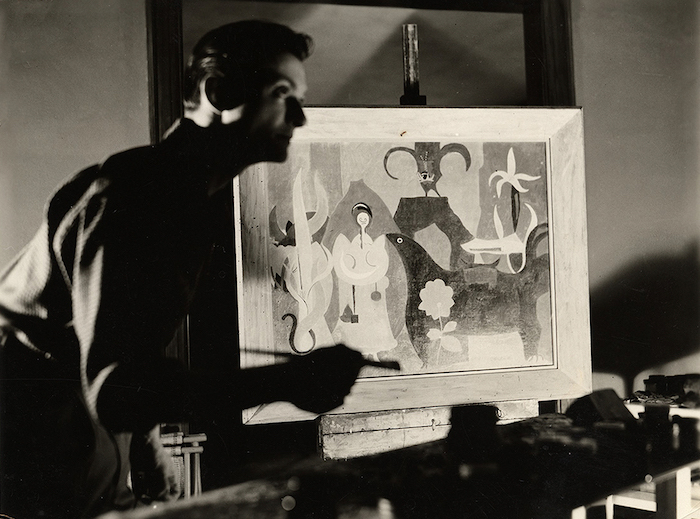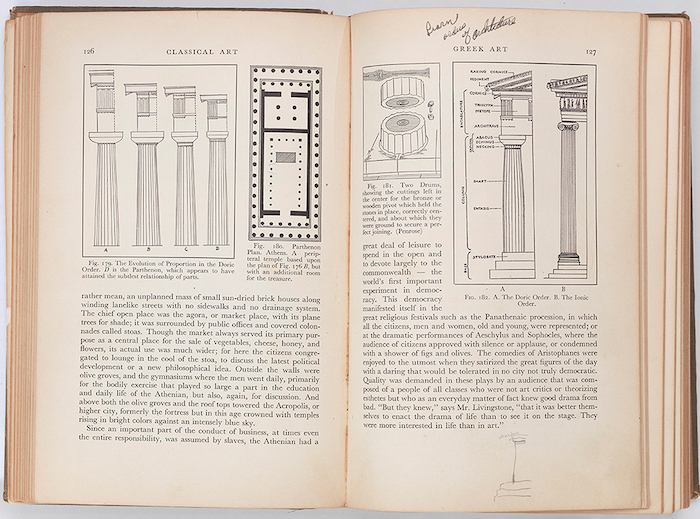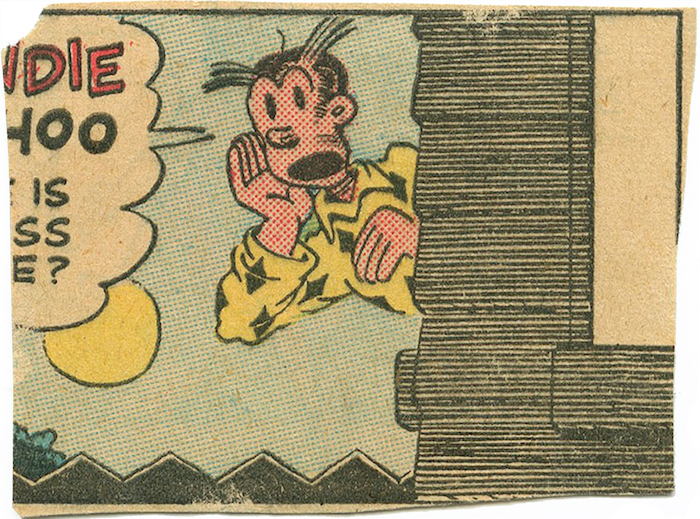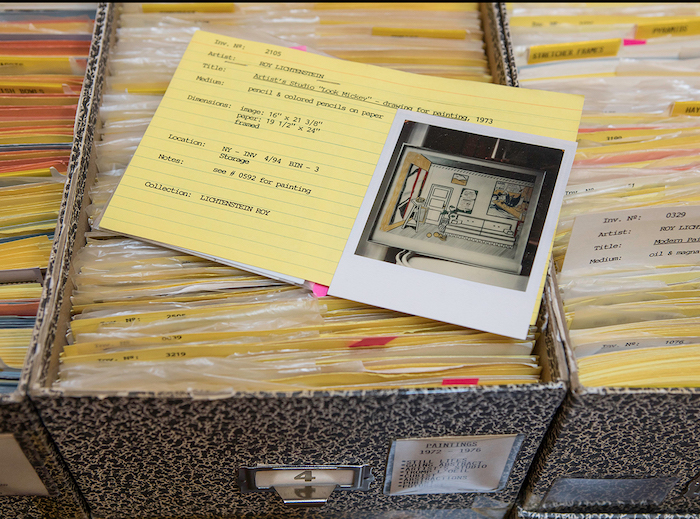Catalogue Terms & Conditions
These Terms and Conditions (“Terms”) set forth the terms and conditions of your use of the digital publication “Roy Lichtenstein: A Catalogue Raisonné” (the “Catalogue Raisonné”) available at www.lichtensteincatalogue.org (the “Site”), a project of the Roy Lichtenstein Foundation (referred to as “RLF,” “us,” “we,” or “our”).
Please read these Terms carefully. By accessing and using the Site, you agree to be bound by and comply with the Terms. If you do not agree to these Terms, you may not access the Site or use any of the information or Content (as defined below) therein.
Reliance on Information Posted
The Content (as defined below) presented on or through the Site is made available solely for general information purposes. We do not make any representation or warranty as to the accuracy, completeness or usefulness of this Content. Any reliance you place on such Content is strictly at your own risk. WE DISCLAIM ALL LIABILITY AND RESPONSIBILITY ARISING FROM ANY RELIANCE PLACED ON THE CONTENT BY YOU OR ANY OTHER VISITOR TO THE SITE, OR BY ANYONE WHO MAY BE INFORMED OF ANY OF ITS CONTENTS.
The Catalogue Raisonné is subject to change. RLF endeavored to make the Catalogue Raisonné as complete as possible as of the time of online publication. As new information and images emerge regarding the works of Roy Lichtenstein, RLF will work to make updates to the Catalogue Raisonné.
Inclusions in Catalogue Raisonné (or Lack Thereof)
Neither RLF nor the Estate of Roy Lichtenstein authenticates artworks, and the inclusion of an artwork in the Catalogue Raisonné does not serve as a warranty or guarantee of that artwork’s authenticity or provenance. In addition, the fact that an artwork has not been included in the Catalogue Raisonné does not necessarily mean that such artwork is not by Roy Lichtenstein.
Copyright & Trademark
“ROY LICHTENSTEIN” is a federally registered trademark of the Estate of Roy Lichtenstein. All other trademarks and trade dress displayed in this website are trademarks and trade dress of the Estate of Roy Lichtenstein, RLF, or of their respective owners. “ROY LICHTENSTEIN” and other trademarks and trade dress used in the website may not be used as trademarks without the prior written authorization of the Estate of Roy Lichtenstein or the respective owners of the trademarks.
All of the content featured or displayed on the Site and in the Catalogue Raisonné, including, but not limited to, images of works of art by Roy Lichtenstein, text, photographs and other materials, as well as the selection and arrangement of materials in the Site (collectively, “Content”), is protected by copyright law and owned by the Estate of Roy Lichtenstein, RLF, or of their respective licensors.
Except as expressly set forth in these Terms, nothing contained on the Site shall be construed as conferring any license or right to any copyright or trademark used on this Site.
Permitted Uses
Provided that you comply with these Terms, we grant you a personal, revocable, limited, non-exclusive, royalty-free, non-transferable, non-sublicensable license to use this Site solely for your personal, non-commercial, educational and research purposes. You may not make any other use of the Site or any of the Content without prior written permission from RLF or the entity(ies) or individual(s) RLF designates for purposes of granting or withholding the relevant permission(s). To request such permission, please contact info@lichtensteinfoundation.org.
The images, text and source material in the Site may be protected by third-party copyright or trademark. No license is granted to you under any such third-party rights.
Prohibited Uses
Notwithstanding the foregoing, you may not (i) download, or attempt to download, any reproduction or image of any work of art, (ii) remove or alter any copyright, trademark or other proprietary notices from any of the Content or (iii) modify, translate, decompile, create derivative work(s) of, copy, distribute, or otherwise use in any manner not expressly permitted herein, the Site. Specifically, and by way of illustration and not limitation, you may not separate any graphics, photographs or other elements from the accompanying text or material in the Site without the prior express written permission of RLF and/or its licensor(s).
You may not use the Site in any way that violates any applicable federal, state, local or international law or regulation (including, without limitation, any laws regarding the export of data or software to and from the US or other countries).
You may not use any “deep-link”, “page-scrape”, “robot”, “spider” or other automatic device, program, algorithm or methodology, or any similar or equivalent manual process, to access, extract, acquire, copy or monitor any portion of the Site or any Content, or in any way reproduce or circumvent the navigational structure or presentation of the Site or any Content, to obtain or attempt to obtain any materials, documents or information through any means not purposely made available through the Site.
No Content accessed from the Site may be used to train artificial intelligence models or tools or otherwise for generating output or other content using artificial intelligence technologies, or to permit others to do the same.
You further agree that you will not:
- Interfere with the proper functioning of the Site;
- Attempt to gain unauthorized access to any portion or feature of the Site, or any other systems or networks connected to the Site or to any RLF server, or to any of the services offered on or through the Site, by hacking, password “mining” or any other illegitimate means; or
- Probe, scan or test the vulnerability of the Site or any network connected to the Site, nor breach the security or authentication measures on the Site or any network connected to the Site.
Registered Users
If you are 18 years old or older, you may register to become a registered user (“Registered User”) and access the Site. You are responsible for all activity under your Registered User account. You agree to provide accurate, current and complete information at all times, and to update it in a timely manner. You may not transfer or otherwise do anything to give another person access to your Registered User account. You must notify us immediately at info@lichtensteinfoundation.org if you become aware that anyone has gained unauthorized access to your Registered User account. You represent and warrant that all information you provide as a Registered User is accurate and complete.
We reserve the right, in our sole discretion, to suspend or terminate your registered access at any time if you have not complied with the Terms or for other reasons that we determine in good faith are necessary or appropriate, including if we suspect you are using or attempting to use the Site in any way that violates these Terms or any applicable laws or regulations.
Third-Party Content and Links to Third-Party Websites
The Site may contain content of, or links to websites controlled by, third parties (“Third-Party Websites”). We are not responsible for Third-Party Websites or their content, activities or privacy practices. Any information you share or actions you take on Third-Party Websites are governed by those websites’ terms of use and privacy statements, which you should review carefully to learn about their practices. The inclusion of third-party content or links to Third-Party Websites on our Site does not imply our endorsement of Third-Party Websites, their content, or any associated organization or activity. We make no representation or warranty whatsoever about the nature of Third-Party Websites and if you decide to access any other websites linked to or from the Site, you do so entirely at your own risk. WE ARE NOT RESPONSIBLE, OR LIABLE TO YOU OR ANY THIRD PARTY, FOR THE CONTENT OR ACCURACY OF ANY MATERIALS PROVIDED BY ANY THIRD PARTIES.
Frames; Metatags
Unless you obtain our prior written consent in each case, you may not: (A) frame any Content on any other website; or (B) use metatags or any other “hidden text” that incorporates the “ROY LICHTENSTEIN” trademarks, marks confusingly similar to our trademarks, or our name.
Additional Disclaimers
THE SITE, CONTENT, AND LINKS AVAILABLE THROUGH IT ARE AVAILABLE “AS IS” AND “AS AVAILABLE.” WE DO NOT WARRANT THAT THE SITE OR ANY CONTENT AND LINKS AVAILABLE THROUGH IT WILL BE UNINTERRUPTED OR ERROR-FREE. THERE MAY BE DELAYS, OMISSIONS, INTERRUPTIONS AND INACCURACIES IN CONTENT AVAILABLE ON THE SITE. WE MAKE NO REPRESENTATIONS OR WARRANTIES ABOUT THE ACCURACY, COMPLETENESS, TIMELINESS, RELIABILITY, OR NON-INFRINGEMENT OF ANY CONTENT AVAILABLE ON THE SITE OR CONTENT OR SERVICES AVAILABLE THROUGH LINKS TO THIRD-PARTY WEB SITES. WE RESERVE THE RIGHT TO CORRECT ANY ERRORS OR OMISSIONS ON THE SITE AND IN ITS CONTENT. IF YOU RELY ON THE SITE AND ANY CONTENT AVAILABLE THROUGH IT, YOU DO SO ENTIRELY AT YOUR OWN RISK.
TO THE MAXIMUM EXTENT PERMITTED UNDER LAW, RLF DISCLAIMS ANY AND ALL EXPRESS OR IMPLIED WARRANTIES WITH RESPECT TO THE SITE AND ANY CONTENT OR INFORMATION THAT IS AVAILABLE THROUGH IT, INCLUDING WITHOUT LIMITATION, ANY WARRANTY OF MERCHANTABILITY OR FITNESS FOR A PARTICULAR PURPOSE (EVEN IF THAT PURPOSE HAS BEEN DISCLOSED).
ALTHOUGH RLF INTENDS TO TAKE REASONABLE STEPS TO PREVENT THE INTRODUCTION OF VIRUSES, WORMS, “TROJAN HORSES,” OR OTHER MALICIOUS CODE TO THE SITE, RLF DOES NOT GUARANTEE OR WARRANT THAT THE SITE, OR CONTENT THAT MAY BE AVAILABLE THROUGH IT, ARE FREE FROM SUCH DESTRUCTIVE FEATURES. RLF IS NOT LIABLE FOR ANY DAMAGES OR HARM ATTRIBUTABLE TO SUCH FEATURES.
Limitation of Liability
RLF AND ITS AFFILIATES, MANAGERS, OFFICERS, EMPLOYEES, CONTRACTORS, AGENTS, VOLUNTEERS, AND ADVISORS, WHETHER IN SUCH CAPACITIES OR INDIVIDUALLY, AND THE HEIRS, SUCCESSORS AND ASSIGNS OF EACH OF THEM (TOGETHER, THE “COVERED PARTIES”) ARE NOT LIABLE FOR ANY CLAIM OF ANY NATURE WHATSOEVER BASED ON LOSS OR INJURY BECAUSE OF ERRORS, OMISSIONS, INTERRUPTIONS, OR INACCURACIES IN THE SITE OR ANY CONTENT AVAILABLE THROUGH IT, INCLUDING LOSS OR INJURY THAT RESULTS FROM YOUR BREACH OF ANY PROVISION OF THESE TERMS.
UNDER NO CIRCUMSTANCES WILL RLF OR THE COVERED PARTIES BE LIABLE FOR ANY DIRECT, INDIRECT, INCIDENTAL, CONSEQUENTIAL, SPECIAL, PUNITIVE, OR EXEMPLARY DAMAGES (INCLUDING LOST REVENUES OR PROFITS, LOSS OF BUSINESS, OR LOSS OF DATA) ARISING OUT OF OR IN CONNECTION WITH YOUR USE OF THE SITE OR CONTENT OR THESE TERMS, REGARDLESS OF THE THEORY OF LIABILITY, WHETHER TORT (INCLUDING NEGLIGENCE), CONTRACT, OR ANY OTHER LEGAL OR EQUITABLE THEORY, EVEN IF RLF HAS BEEN ADVISED OF THE POSSIBILITY OF SUCH DAMAGES. OUR AGGREGATE LIABILITY TO YOU FOR ANY USE OF, OR INABILITY TO USE, THE SITE OR CONTENT IS LIMITED TO $1000. SOME STATES DO NOT ALLOW THE LIMITATION OF LIABILITY FOR THESE KINDS OF DAMAGES, SO THESE LIMITATIONS OR EXCLUSIONS MAY NOT APPLY TO YOU.
Indemnification
You agree to indemnify, defend and hold harmless RLF and the Covered Parties from and against all demands, loss, liability, claims or expenses (including attorneys’ fees) made against RLF and the Covered Parties arising out of your use of the Site, its Content, or violation of these Terms.
Infringing Material
RLF respects the intellectual property of others and expects users to do the same. As to allegedly infringing copyrighted works, we comply with the take down and counter notification provisions of the Digital Millennium Copyright Act (“DMCA”), 17 U.S.C.A. § 512, as set forth below.
We reserve the right to remove or disable access to any Content claimed to be infringing, at any time at our sole discretion, without notice or liability. In appropriate circumstances, we will also terminate users of the Site who are repeat infringers.
If you believe that Content has been used in a way that constitutes copyright infringement, please provide our designated agent, whose contact information is listed below, with a written notice containing all of the following information (“DMCA Notice”):
- A physical or electronic signature of a person authorized to act on behalf of the owner of an exclusive right that is allegedly infringed;
- Identification of the copyrighted work claimed to have been infringed;
- Identification of the Content that is claimed to be infringing or to be the subject of infringing activity, and information reasonably sufficient to permit us to locate such Content on our Site (such as the URL to each page on the Site containing allegedly infringing material);
- Information reasonably sufficient to permit us to contact you, such as an address, telephone number, and, if available, an email address;
- a statement that you have a good faith belief that use of the Content in the manner complained of is not authorized by the copyright owner, its agent, or the law; and
- a statement that the information in your notice is accurate and, under penalty of perjury, that you are authorized to act on behalf of the owner of an exclusive right that is allegedly infringed.
Our agent designated to receive DMCA Notices may be contacted as follows:
info@lichtensteinfoundation.org
Changes to the Terms
RLF may change these Terms from time to time by posting an updated version on this web page, or, if we determine that it is appropriate, we may provide other notice to you. Your continued use of the Site after we post updated Terms means that you accept and agree to such Terms. We recommend checking back on this web page regularly if you use the Site.
Termination
We reserve the right to terminate the Site, these Terms, and any Content, and your access to the Site and/or the Content, at any time without notice, for any reason. The “Reliance on Information Posted,” “Copyright & Trademark,” “Inclusions in Catalogue Raisonné (or Lack Thereof),” “Additional Disclaimers,” “Limitation of Liability,” “Indemnification,” and “Governing Law” sections of these Terms (along with this provision and any other provision that by its terms contemplates survival) survive any termination of these Terms.
Governing Law
These Terms are the complete agreement between you and RLF regarding your use of the Site and is governed by applicable federal laws and the laws of the State of New York applicable to agreements made and completely performed there. Any dispute arising out of or in connection with these Terms shall be subject to the exclusive jurisdiction and venue of the United States District Court for the Southern District of New York located in the Borough of Manhattan in the City of New York or, only if such court does not have subject-matter jurisdiction, the Supreme Court of the State of New York, New York County.
You irrevocably agree to bring any claim or dispute relating to your use of the Site and these Terms exclusively in the state and federal courts located in New York, to submit to the exclusive jurisdiction of those courts, and to waive any jurisdictional, venue, inconvenient forum, or other objections to those courts.
Other
Section titles and headings are for convenience only and have no legal or contractual effect. The failure of RLF to exercise or enforce any right or provision of the Terms shall not constitute a waiver of such right or provision. If a court of competent jurisdiction determines that any provision of these Terms is unenforceable for any reason, then that provision will be deleted and the remaining provisions of these Terms will be enforceable to the fullest extent permitted by law.
Questions
Please email info@lichtensteinfoundation.org with any questions you may have about these Terms.
